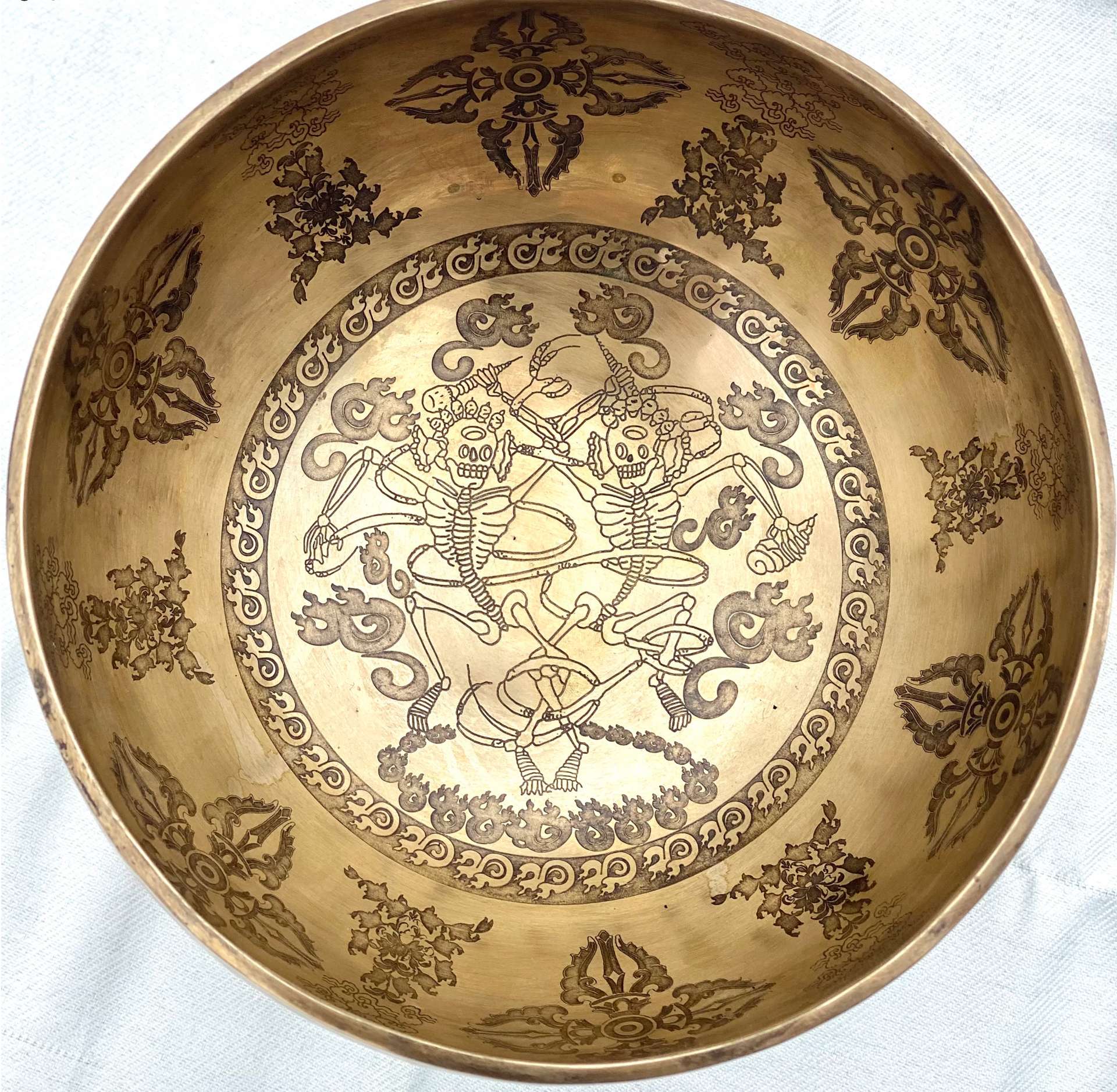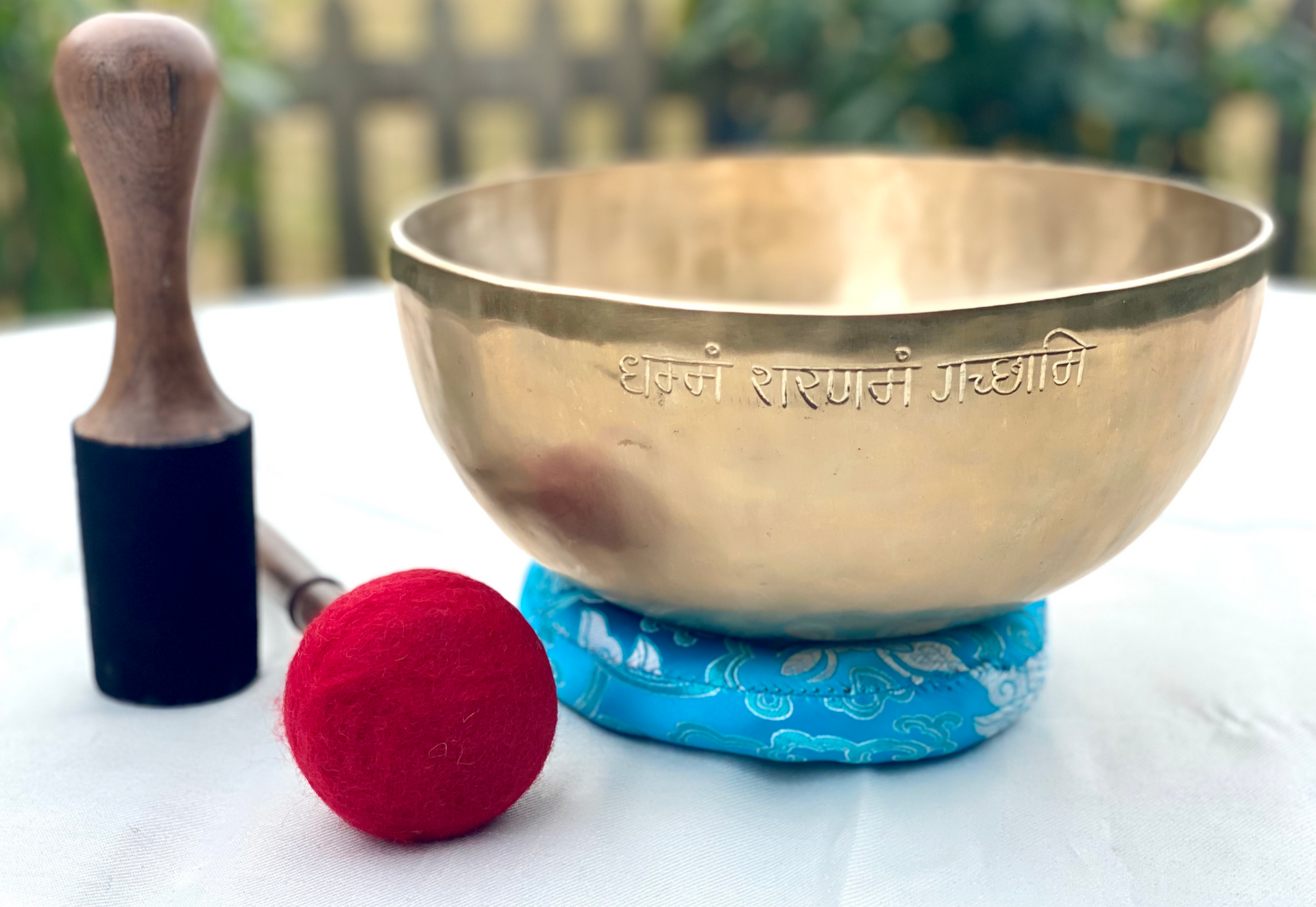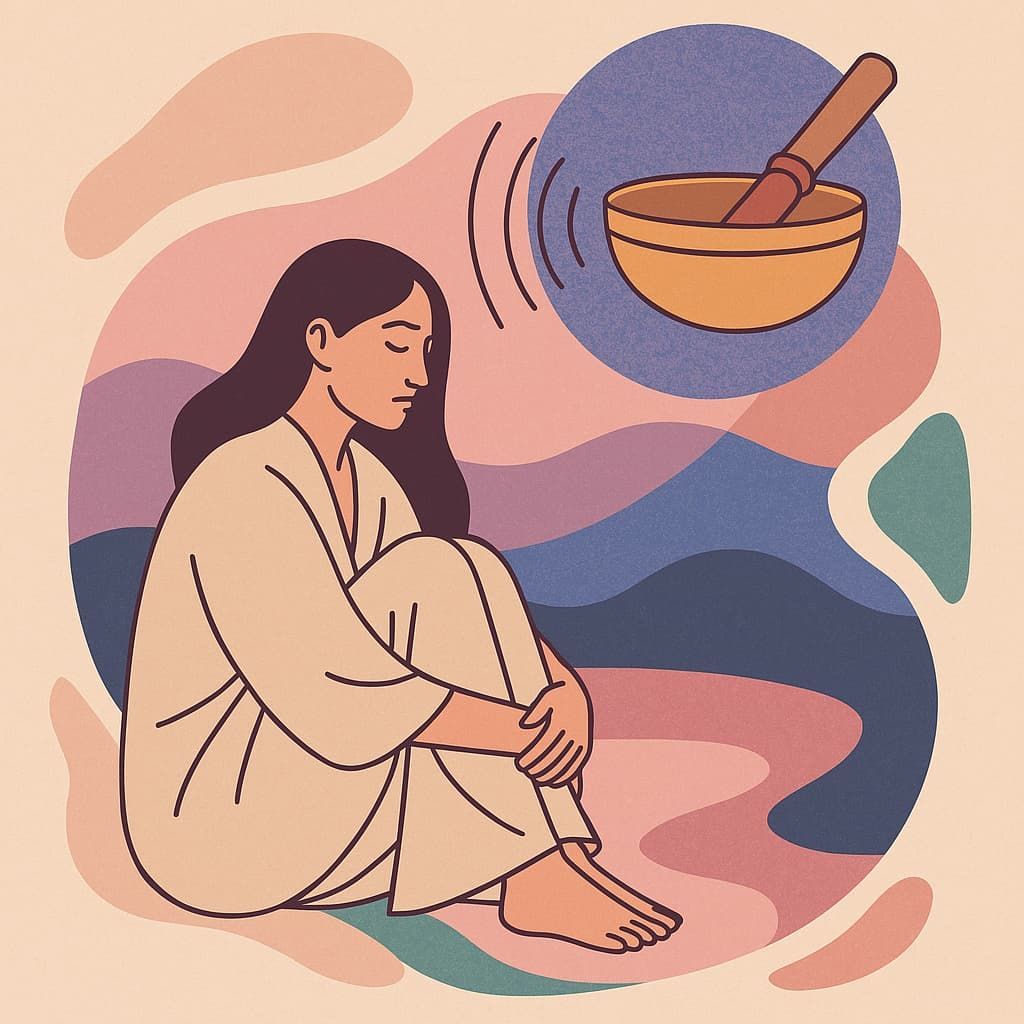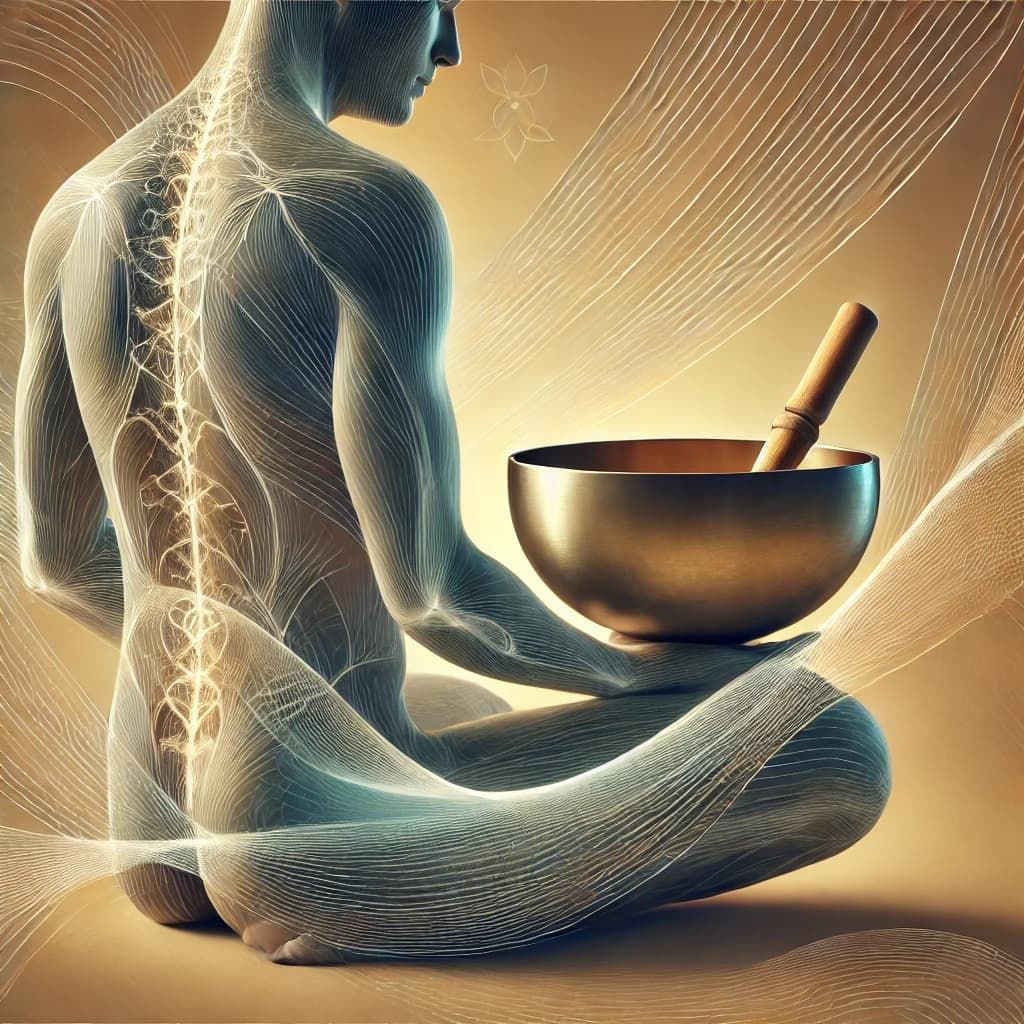The Tantric Body: Vibration, Pleasure & Resonance
Have you ever felt your whole body become an instrument of resonance?

This article contains reflections and practices related to the use of singing bowls, inverted bells forged from a traditional blend of seven metals, handmade in Nepal according to Tibetan tantric lineage.
The Body, an Instrument of Distributed Resonance
In tantric understanding, anatomy & its perception exist in layers, interwoven in a multidimensional web, the Web of Tantra. In this context, observing how a singing bowl transforms raw energy into resonance offers a mirror: it reveals how our own internal systems of pleasures, physical, emotional, nervous, cellular, may be vibrating in ways we barely perceive.
When a hand-made singing bowl is struck or made to sing by rotation, the vibration circulates in prismatic waves, creating a living resonance that moves toward its still center. The result is a continuous field of harmonised sound followed by a deep silence.
In this shared dynamic, between the body and the bowl, we gain a new angle on what it means to be a vibratory being, shaped by sound, structured by resonance. What we call pleasure arises from the resonance of our body with another intelligent vibratory field.

Vibration and Bodily Pleasure: Between Activation and Soothing
When a vibration is transmitted to the body, by a bowl, a speaker, an instrument, or even a voice, it produces a sensory stimulation that can go in two complementary directions:
- Activation (yang): some frequencies awaken, energise, and stimulate. They make the surface vibrate, stimulate circulation, and amplify body perception.
- Soothing (yin): other frequencies penetrate slowly, without shock. They resonate with the deep structure of the body, calm the heart rate, reduce inflammation, and decompress the nervous system.
The bodily pleasure linked to vibration does not come from intensity alone but from the alignment between frequency, stimulated zone, and internal state. It can be:
- localised (like a sound massage on a tension point),
- or global (when the vibration spreads throughout the torso or bones).

Resonance Between Bodies: Meeting the Other
Two tuned singing bowls can start to vibrate at a distance, if one is activated nearby. Similarly, two bodies can enter resonance, even without touching, through voice, breath, or shared vibration.
In this logic:
- Touch becomes the climax of vibratory intensity, whose spectrum is simultaneously held by both energetic entities touching within the same physical space (Yantra).
- Listening becomes an act of meditation (Nada Yoga), where sound is the guiding thread of the experience and the anchor in the present moment.
- Exchange becomes conscious, anchored in a shared physicality (Yin–Yang).
Shiva & Shakti: A Tantric Logic of Vibration
In tantric tradition, Shiva and Shakti are two fundamental principles used to describe how reality functions at every level—from the cosmic to the cellular. Rather than speaking in abstract terms, the tantric tradition personifies these forces to help us better understand their interplay.
- Shiva represents the stable, the still, the conscious space. It is structure, presence, and potential.
- Shakti represents the active, the moving, the vibratory force. It is energy, flow, and expression.
These are not fixed identities, but roles that elements, bodies, or moments can take in any interaction. One holds, the other moves. One receives, the other radiates. But neither exists without the other.
This logic is similar to the yin-yang model: not a strict opposition, but a dynamic movement, where each contains the seed of the other and where the two are always turning into one another. It’s not a static duality, but a spiral of mutual influence.

Applied to vibration and bodily pleasure, this means:
- Any pleasurable sensation is not just stimulation. It is the result of a resonant interaction between something that moves (Shakti) and something that listens, receives, and integrates it (Shiva).
- In the body, these two forces are constantly alternating. For example, when you feel the subtle waves of a singing bowl, part of your system may be activating, while another part is holding space, allowing the sensation to spread.
This interplay explains why vibratory pleasure often feels layered or pulsing—it follows the wave of Shakti, but within a structure held by Shiva. It’s not just “feeling good”; it’s the body entering a dynamic balance between movement and stillness, energy and awareness.

Practise 1: Sensory Touch
Objective:
- Develop fine vibratory awareness.
- Explore zones of intensity (edges) and fineness (center).
- Feel the body’s sensory field as a living space, close to the bowl.
This simple practice helps you explore the subtle difference between giving touch and receiving touch, while developing presence and sensitivity in both roles.
- Place one hand in a passive, resting position, simply still, open, and receptive.
- With the fingers of the other hand, begin to gently stroke the passive hand, with light and slow movements.
- Stay fully aware of what your active hand feels as it touches, texture, temperature, resistance.
- Then shift your attention to what your passive hand is feeling, the sensation of being touched, the quality of the contact, the emotional response.
- After a minute or two, switch hands, and repeat the same exploration on the other side.
- Then, if you like, let the two hands meet and continue soft, playful movements, as if both are giving and receiving at the same time.
There’s no goal here, just play with the sensations for a few minutes.

Practise 2: Feeling the Vibration of a Singing Bowl
Objective:
- Feel resonance at a distance, without contact.
- Refine the perception of the invisible vibratory space around sounds.
- Connect the bowl and the body within the same sensitive perception.
Practice with eyes open (initial stage):
- Make the bowl sing softly, by friction or gentle striking.
- Place your hands a few centimetres from the bowl, palms open towards it, without touching.
- Stay still and attentive: observe and feel the air movements, the subtle waves, the micro-pressures that spread around.
- Slightly move your hands closer or farther. Try to perceive how far the vibration is still noticeable.
- Then, slowly let your hands approach until they just barely touch or touch the bowl.
- When contact is made, hold it gently while the sound fades.
Notice how the contact changes your sensation.
Practice with eyes closed:
- Once comfortable with the eyes-open practice, try doing the exercise with your eyes closed. This allows you to amplify internal perception and fully focus on the vibratory sensation. You can thus deepen the resonance between your hands and the bowl without visual distractions.












